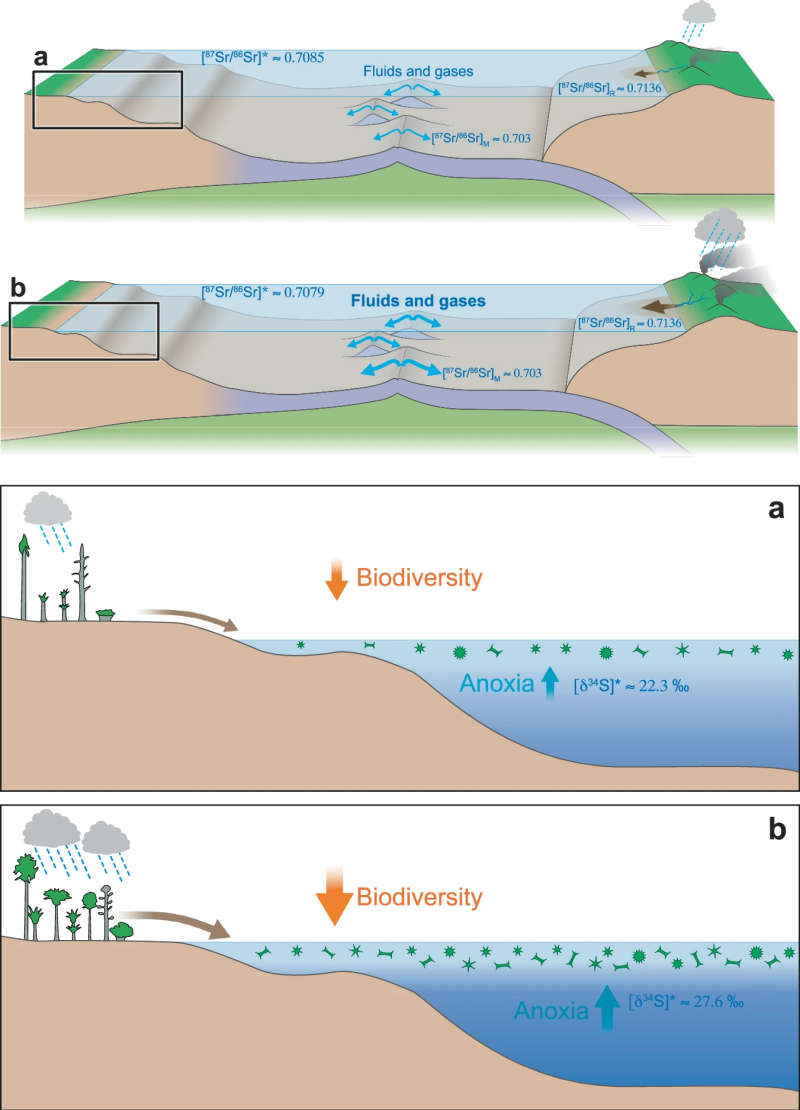Follow us on Google News (click on ☆)
By analyzing periodicities in geological records, researchers—including two from the Institut des sciences de la Terre de Paris (CNRS / Sorbonne Université)—have uncovered an internal geological clock that appears to regulate major biological upheavals during the Phanerozoic.
Geologists and paleontologists have long defined the geological time scale primarily based on major disruptions to life on Earth. Eras, periods, and epochs, particularly their boundaries, were thus determined according to major paleobiological transformations. The stage, the basic unit of this scale, is mainly defined by the fossil content of rocks.
For the vast majority of Phanerozoic stages, the fundamental time markers correspond to biostratigraphic events (first and last appearances of fossil groups), reflecting potential global paleoenvironmental variations that affected biodiversity and the renewal of life on Earth.
A 60-million-year cycle linking tectonics, geochemistry, and biodiversity
The authors identify a 60-million-year (Ma) periodicity in the duration of geological stages, which perfectly coincides with similar fluctuations in marine biodiversity, biogeochemical cycles, and major shifts in global tectonic plate movements during the Phanerozoic. This shared synchronization suggests a deep connection between the evolution of marine life and Earth's internal activity through surface processes such as continental weathering or oceanic redox conditions.

Diagrams illustrating possible driving mechanisms of the 60-million-year biodiversity cycle during the Phanerozoic.
Earth, the driver of its own biological crises?
The findings suggest that these tectonic processes modulate ocean biogeochemistry, directly influencing shallow marine habitats—the most biodiverse. Variations in redox conditions could explain the major extinction events observed in the fossil record.
Thus, this coupling between internal and surface processes reveals that Earth may indeed keep its own geological clock, controlling major transformations in marine life (paleoenvironmental and paleobiological) throughout geological time.